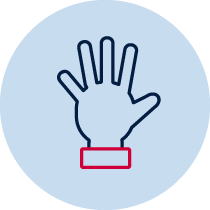Time – Comparing how long it takes
 |
 |
 |
 |
| Practical | Build and make | Resource required | Whole class |
Measurement – time
- describes, compares and orders durations of events, and reads half- and quarter-hour time MA1-13MG
- describes mathematical situations and methods using everyday and some mathematical language, actions, materials, diagrams and symbols MA1-1WM
- uses objects, diagrams and technology to explore mathematical problems MA1-2WM
- supports conclusions by explaining or demonstrating how answers were obtained MA1-3WM
Content
Describe duration using months, weeks, days and hours (ACMMG021)
National Numeracy Learning Progression mapping to the NSW mathematics syllabus
When working towards the outcome MA1-13MG the sub-elements (and levels) of Interpreting fractions (InF1) and Measuring time (MeT2-MeT3) describe observable behaviours that can aid teachers in making evidence-based decisions about student development and future learning.
Materials
- string, ribbon, streamer, crepe paper, strips of paper – anything that can be cut to different sizes by students.
- sticky tape or glue
- Comparing how long it takes (DOCX 70.5KB)
Teacher instructions
The purpose of this task is to gauge students’ understanding of time concepts such as:
- describing and comparing the duration of everyday events
- using informal units to represent students’ understanding of the duration of everyday events
- using objects and drawings to represent and explore duration.
This task is designed to reveal students’ sense of the relative duration of events. The length of the streamer/string will indicate students’ understanding when comparing duration of events and their
ability to represent informal ways of measuring time, moving towards use of more formal units such as seconds/minutes/hours.
Task variances: Teachers might instruct students to pick four different activities that happen at different times of the day e.g. morning, at school, afternoon, night. A brainstorm of simple activities could be created prior to task to ensure student understanding e.g. brushing teeth, eating lunch, washing dishes, going to soccer training, etc. Teachers might ask students to label the event for each picture or the teacher may need to scribe this for future reference.
Students who demonstrate understanding of formal units of measuring time could draw a picture of a clock showing the time the event starts and another picture of a clock to show the time it ends or write how many seconds/minutes/hours they think each event might take.
Alternatively, students who do not yet have an understanding of formal units such as seconds/minutes/hours, may instead demonstrate their understanding by responding to questions such as; ‘Which activity takes you the longest/shortest amount of time to complete? Why? and ‘Can you think of another activity that takes about the same amount of time?’.
Allowing time for students to review their cut streamers/ribbon may be useful before sticking them on the page – students may need prompting to think about which event takes the longest and shortest: do the lengths of their streamers reflect this? Students may wish to adapt their answers.
Teachers may want to photograph the students’ work for easy recording of results.
Student instructions
- Think of four different activities you might do in a day. Draw a picture of you doing these four different activities, one in each box.
- Cut each box out and arrange them in order from the activity that takes the shortest amount of time to the activity that takes the longest amount of time.
- For each activity, cut a piece of streamer to represent how long the activity might take. Stick your streamers on the bottom of each picture. Your streamers should easily show whether your activities take a short amount of time or a long amount of time.
Possible areas for further exploration?
If a student is unsuccessful, possible gaps in learning may be around understanding the abstract nature of time. For example, students may associate a task they don’t enjoy as taking longer than a task they do enjoy. Another example of an activity might be sought to gauge if this is a barrier for students.
Where to next?
Students who are successful in this task may indicate their readiness to explore formal units of measurement in recording time such as seconds, minutes and hours to determine the duration of short-term events. Students who demonstrate understanding of formal units of measuring time could draw a picture of a clock showing the time the event starts and another picture of a clock to show the time it ends or write how many seconds/minutes/hours they think each event might take.
Students who are unsuccessful in this task may require further experimentation with duration using simple everyday language to explain and compare activities. Teachers may need to adapt the task to be only two activities for students to compare the duration of and could use the terms ‘longer’, ‘shorter’, .to describe the amount of time it takes (see Early Stage 1 syllabus.
Task taken from:
Downton, A., Knight, R., Clarke, D. & Lewis, G. (2006). Mathematics assessment for learning: Rich tasks and work samples. Melbourne: Australian Catholic University.
Please note:
Syllabus outcomes and content descriptors from Mathematics K-10 Syllabus © NSW Education Standards Authority (NESA) for and on behalf of the Crown in right of the State of New South Wales, 2012